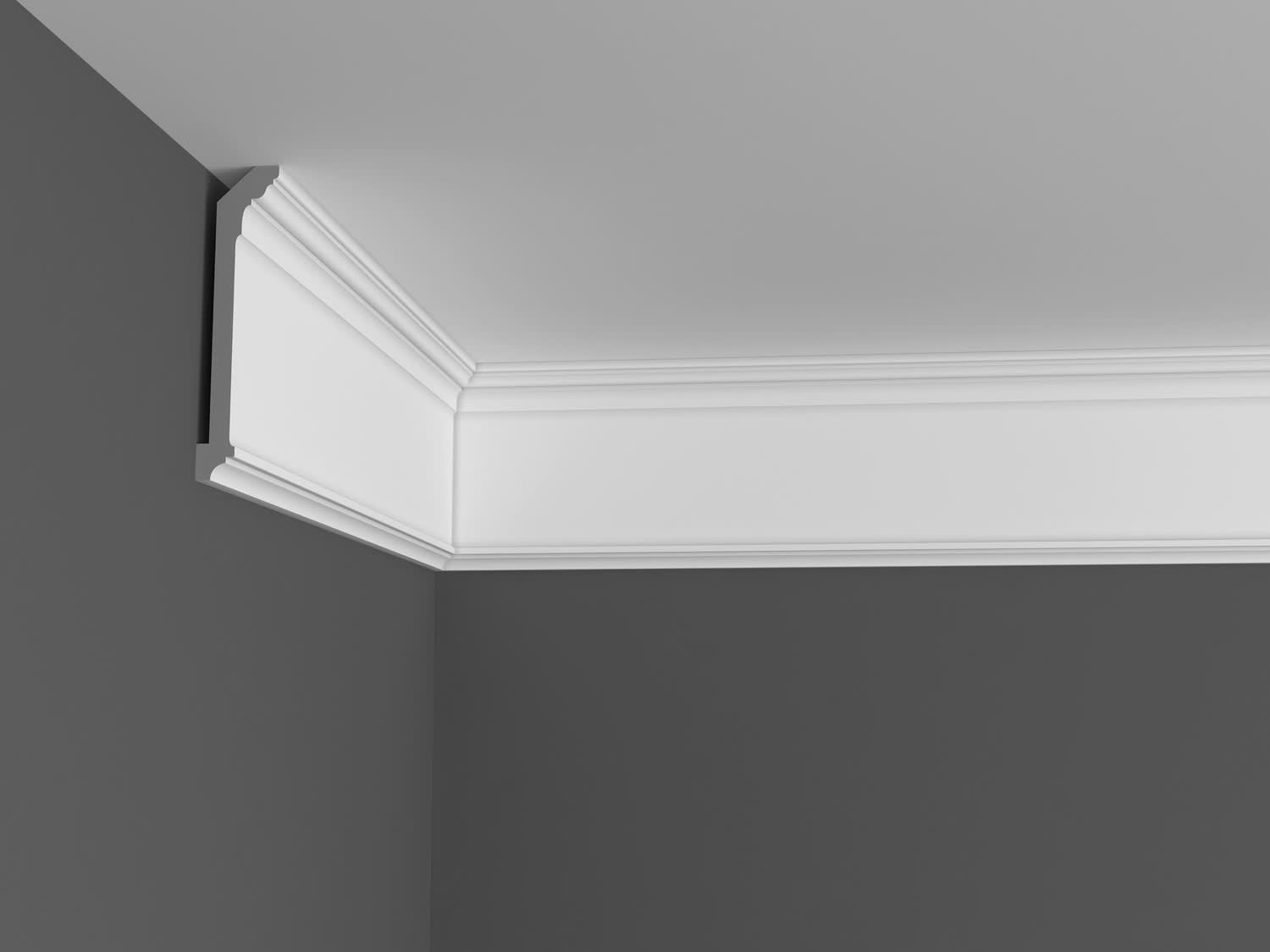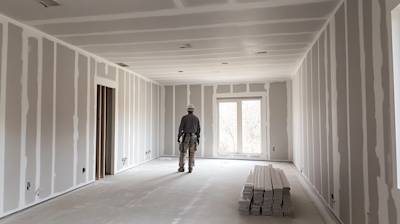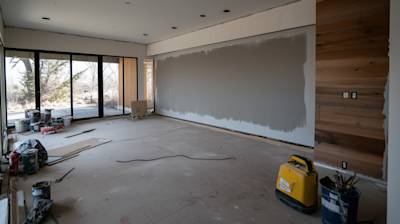Highly valued for its decorative and functional properties, coving has a rich history dating back to ancient Greco-Roman architecture. Now more commonly associated with modern interior design, its reputation for adding elegance to any room goes uncontested. Beyond aesthetic value though, coving also provides practical benefits, from concealment of unsightly wiring and cracks to improving the acoustics within a space. In this comprehensive guide to coving, we will address the different types, materials, and buying considerations, along with providing an insight into the installation process.
Understanding Coving: An Insight into Its Purpose
Coving acts as a decorative bridge between walls and the ceiling, creating a uniform, often ornate, profile that enhances the interior architecture of a space. It contributes to a softer, visually appealing aesthetic, making spaces look more elegant and finished. Besides, coving also serves practical purposes such as hiding structural imperfections, layers of paint build-up, wiring, and helps with sound diffusion, making it popular in both residential and commercial areas.
The Rich History Behind Coving
The roots of coving stretch back to the ancient times of Greeks and Romans who would use extravagantly carved mouldings to display their wealth and power. Since then, coving styles and application have evolved, reflecting different epochs of architectural trends and advances in materials and technology.
Types of Coving: Giving Your Room a Personality
Plain Coving
Plain coving tends to be minimalistic and universal, making it an ideal choice for contemporary interior styles. It helps seamlessly integrate walls and ceilings without drawing excessive attention.
Ornate Coving
Ornate coving, decorated with intricate designs, is perfect for period homes or to create a vintage aesthetic. These designs could include floral motifs, abstract forms, or historical elements.
Picture Rail and Dado Rail Coving
Picture rail and dado rail coving are not just decorative but functional, traditionally used to hang art pieces or protect walls from furniture damage.
Choosing the Right Coving Material
Polystyrene
Polystyrene coving is lightweight, affordable, and easy to install. It's ideal for simple, understated designs and is easily painted over.
Plaster
Plaster coving offers more complexity in terms of design choices. Though heavier and requiring professional installation, plaster is durable and creates a seamless integration with plaster walls and ceilings.
Wood
- Ideal for rustic or period-specific designs - Can be stained or painted - High durability - Requires professional installationInstallation Guidelines
While some materials are easier to handle, professional help is often recommended for coving installation, especially for plaster or wooden coving. It's essential to plan, choose the right adhesive, prepare the surfaces, accurately cut the coving lengths and ensure they are aligned level before fixing them to the wall and ceiling. Sanding the edges and painting or finishing completes the installation process.
Selecting Your Coving: Questions to Consider
Before buying coving, one must consider a few aspects. The room's size and height, existing interior design, coving material, maintenance requirements, ease of installation, and of course, budget are all factors that can influence your choice. Consulting with a design expert or professional installer can ensure you make the right selection so your coving not only looks good but also serves its functional purpose efficiently.
Take Your Interiors to the Next Level with Coving
Enhancing any space with depth, character, and timeless appeal, coving makes for a valuable addition to any home or office interior. This decorative feature's ability to elevate the room's visual appeal while hiding imperfections and enhancing acoustics makes it a preferred choice among interior enthusiasts and experts alike.
Frequently Asked Questions About Coving
How is coving installed?
Installing coving typically involves a process of measuring, cutting, and fixing the coving material to the area where the wall meets the ceiling. It's often attached using a strong adhesive and occasionally supplemented with nails or screws. As it requires precise work to ensure the coving is neat and straight, it's usually best implemented by professionals or experienced DIY individuals.
What materials are used for coving?
Coving can be made from a variety of materials, including plaster, polyurethane, polystyrene, and timber. Each material has its own unique properties and effects. Plaster and timber coving often provide a traditional, elegant finish, whereas polyurethane and polystyrene coving are lighter, cheaper, and easier to install.
How is coving cut and shaped?
The cutting and shaping of coving require precision and care. It’s usually cut at a 45-degree angle using a mitre box to achieve the correct profile. A fine-tooth saw is typically used to cut the coving, and a coving adhesive is used to fix it into place.
How can I maintain my coving?
Maintenance of coving depends largely on the material used. For most types, simple dusting and occasional cleaning with mild detergent should be sufficient. In the case of timber coving, regular inspection for signs of rot or damage is advisable. If your coving gets damaged, it's often possible to repair it using filler or plaster, depending on the material.
Are there any styles or trends in coving?
Yes, there are many styles of coving ranging from the ornamental and elaborate to the simple and contemporary. Some of the timeless trends include Georgian, Victorian and modern-style coving. These trends are largely dictated by the period and style of the property.
How is coving measured?
Coving is usually measured across its diagonal, from one edge to the other. This measurement aids in calculating the quantity of coving needed for a particular room and ensuring that sufficient material is purchased. The angle of the coving, its projection onto the ceiling and down the wall, can also be important measurements.
Are there any guidelines for choosing the right size of coving?
A general rule of thumb when choosing the size of your coving is to consider the height of your ceilings. High ceilings often look best with larger, more ornate coving, while smaller, simpler coving usually suits lower ceilings better. Ultimately, the choice of size and style of coving will depend on your personal taste and the style of your home.
Can I paint over coving?
Yes, you can certainly paint over coving. In fact, many people choose to do so in order to match or contrast their coving with their walls or ceiling. Before painting, ensure the coving is clean, dry, and free of dust. A primer might be needed depending on the material of the coving, particularly for plaster coving, before applying the top coat.
Can I install coving myself?
While coving installation can be a do-it-yourself task, the process requires a certain degree of precision and skill. If you are comfortable with DIY tasks, have the necessary tools, and are able to accurately measure and cut the coving, then you could certainly attempt to install it yourself. However, for larger or more complex jobs, or if you're unsure, hiring a professional may be the best choice.
Where can I buy coving?
Coving can be purchased from a wide range of outlets. Many DIY and home improvement stores stock coving, as do some specialist plaster and moulding suppliers. Online retailers also carry a range of coving products, with various materials and styles to choose from.
Pros and Cons of Coving
Pros of Coving
Added Aesthetics
- Coving adds an additional aesthetic charm to your rooms. It creates a smooth transition between the walls and ceiling which can appear more pleasing to the eye compared to a sharp corner.
Value Addition
- Coving can add value to your property, particularly if it's period-style coving that's consistent with the age and style of the property. Period properties with original style coving are often sought after.
Hide Imperfections
- Coving is great for hiding wall or ceiling imperfections. It covers the joint between the two, so any cracks or unevenness are easily concealed.
Style and Variety
- There are various styles of coving available in different materials such as plaster, polyurethane and polystyrene. This means you can choose something that matches your interior decor and overall style.
Improved Lighting Diffusion
- When used correctly, coving can enhance the diffusion of light in your rooms, giving a warmer and softer effect which can make your space feel more comfortable and inviting.
Cons of Coving
Difficult Installation
- Proper installation of coving can be difficult and requires some degree of skill. The process can be time consuming, particularly if the walls are not straight or the room is an unusual shape.
Maintenance
- Just like any decorative feature in your home, coving requires maintenance and cleaning. Dust and cobwebs can accumulate in the corners and it might be difficult to reach, especially if the ceilings are high.
Not Suited for All Styles
- Although there's a variety of styles available, coving might not suit all interior designs. For example, it might look out of place in ultra-modern homes with minimalist aesthetics.
Damage to Walls and Ceilings
- If not installed carefully or if removed in the future, coving can potentially cause damage to your walls and ceilings. This might require additional repair work and expense.
Cost
- The cost of coving can add up, especially when you consider professional installation. High quality materials such as plaster coving can be more expensive, and even lower cost materials will add up over larger spaces.
Summary
When you want to give your room that polished look, coving can make a huge difference. it gives those sharp edges a soft, beautiful turn, creating visual continuity and enhancing the overall room aesthetic. As it smoothly links the wall and ceiling, it subtly elevates the appearance of the room and provides a sense of complete design.
Coving is also a practical solution when you want to hide imperfections or irregularities in the meeting point of your walls and ceiling. Whether it’s unevenness, cracks or peeling paint, putting up some coving can successfully mask these flaws, leaving you with flawless visuals. Beyond hiding physical defects, coving also helps in reducing the accumulation of dust in the corners.
Choosing to add coving to your interior design is a smart choice with a host of aesthetic and practical advantages. While installation might seem challenging, finishing the project will leave you with a sense of accomplishment and can even improve your property's value significantly. With its timeless beauty and functional benefits, coving is an inexpensive way to add a touch of elegance to your spaces.
About Atlas Stucco
Welcome to Atlas Stucco, a leading stucco contractor in Sacramento, CA. We've been shaping the local skyline with our top-notch stucco solutions since our inception. Our team is dedicated to transforming properties with enduring and beautiful stucco finishes. Through a blend of passion, creativity, and skill, we deliver results that exceed expectations every time. So if you're looking for quality stucco services, we're your top choice.
Tags: coving, interior design, home improvement,








